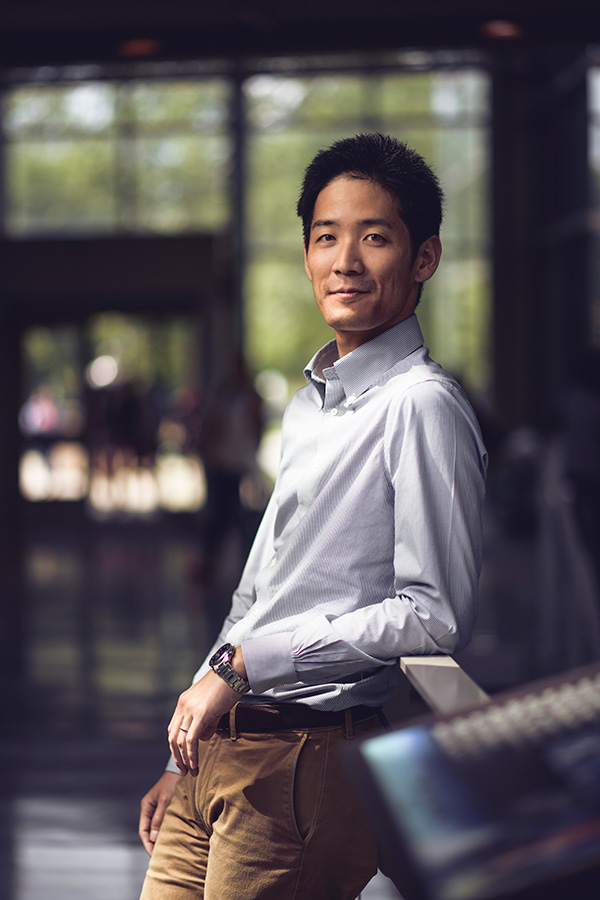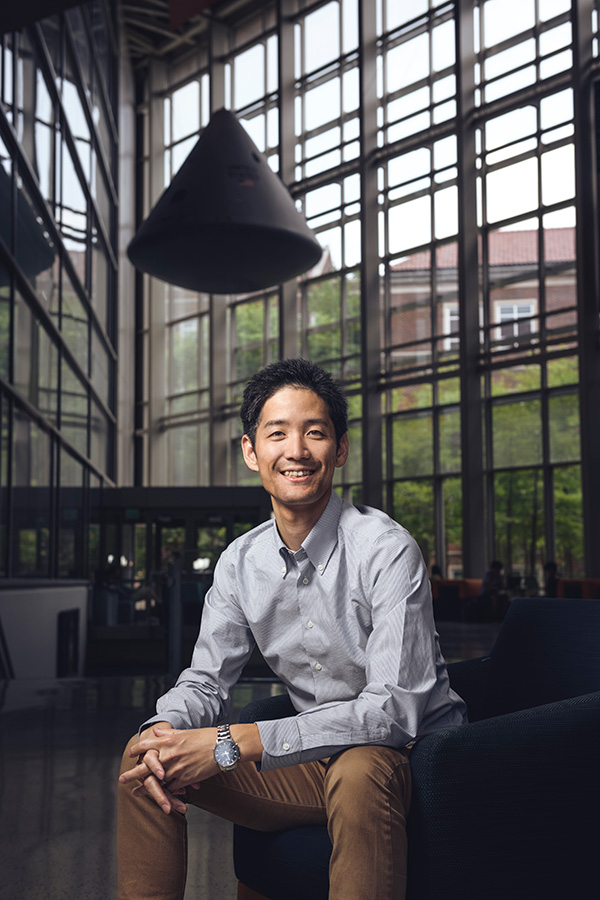Ken Oguri, liberating distant satellites - AAE Faculty Profile
Autonomous satellite navigation is necessary to expand cislunar space operations. Oguri is making that autonomous operation possible.

Spacecraft are trapped behind human control. When Ken Oguri supported small satellite and deep-space missions at Japan Aerospace Exploration Agency (JAXA), he saw how specific the navigation commands sometimes needed to be.
“I was creating very detailed commands for how many seconds to rotate the satellite body about which axis for how many degrees, then change the direction of rotation for so many seconds, then fire your engine for so many seconds,” says Oguri, assistant professor of aeronautics and astronautics.
Seeing how so many satellite orbit control commands were human-generated, Oguri realized that spacecraft would need to be more independent from the ground before space exploration could be sustainable. That feeling was reinforced during his time at NASA’s Jet Propulsion Laboratory (JPL), where he conducted postdoctoral research just before coming to Purdue in January 2022.
Oguri’s research group is contributing to the Cislunar Initiative by developing solutions that will enable commercial work and science exploration in the area between the Earth and Moon. Making satellites more self-sustaining is one of the main motivating factors in his work.
“It's not only cumbersome, but almost impossible to do continuous interaction with satellites because of the limited number of antennas on the ground. It's not only desirable, but necessary in the coming decade, if we want to expand our space activity beyond earth's orbit and into cislunar space,” Oguri says.
The antenna limitation
With NASA preparing to build the Lunar Gateway — a space station that would orbit the Moon — any support craft and other traffic in this area will need to operate relatively independently.
“That is because there is such a long delay in communications, and it’s also infrequent. You have to pinpoint the direction of the spacecraft, so you can only communicate with one spacecraft at a time,” Oguri says. “The 60-meter antennae are mostly occupied with more important missions, flagship missions like the Mars rovers, Juno orbiting Jupiter, and eventually Gateway. So we have to reduce the frequency of communications with cubesats or small spacecraft in deep space.”
Oguri says once Gateway is operating, this area will need additional support craft for operations like on-orbit servicing and space junk collection. Oguri is developing frameworks and algorithms for autonomous spacecraft control that would enable distant spacecraft to manage many types of maneuvers independently, including orbit and attitude control, rendezvous and docking, and sensing capabilities related to these maneuvers.

Safe systems in a chaotic environment
There are three main factors to consider when designing autonomous control algorithms, Oguri says: Characterizing and modeling nonlinear vehicle dynamics, estimating the orbital state of the vehicles as well as the properties of those other objects, and planning maneuvers that anticipate vehicle faults.
“We want to make sure that our spacecraft is capable of doing perception and estimation of relative position and velocity. That's important in interaction with the Lunar Gateway, or if we consider some other missions in low earth orbit or cislunar space. It must know how the other object is moving with respect to other things.”
Different lighting conditions can affect how well the spacecraft will be able to understand its surroundings, which makes characterizing other objects additionally difficult for both debris collection and on-orbit servicing.
“If that object is debris, we have to estimate the mass and also the moments of inertia to predict its motion. If we want to dock for servicing, we have to consider both translational and rotational motion with respect to the other satellite. To do these things, we have to control all these elements precisely to make sure that this operation is successful,” Oguri says.
Knowing these factors is only the beginning of making an autonomous maneuver. To build trust in these autonomous systems, they must be tolerant against faults.
A balancing act for future integration
In a separate but related project, Oguri is working on autonomous guidance algorithms that consider the varying gravitational forces between the Earth and Moon. This is necessary for vehicles that will operate in the area of balanced gravity between them.
“There are some chaotic regions where these two forces are competing with each other. If we add small perturbations in one direction, it might go toward the moon, or toward the earth,” Oguri says. “This requires more careful implementation of control and navigation.”
Oguri hopes to leverage these nonlinear effects in his autonomous control research.
“Both of them are important for space autonomy. We need to carefully model nonlinear, sensitive, chaotic dynamics in space, and we also want to consider safe, autonomous control of six degrees of freedom vehicle motions,” Oguri says. “For now, I’m starting in two different streams of projects and I want to eventually merge them into one.”
